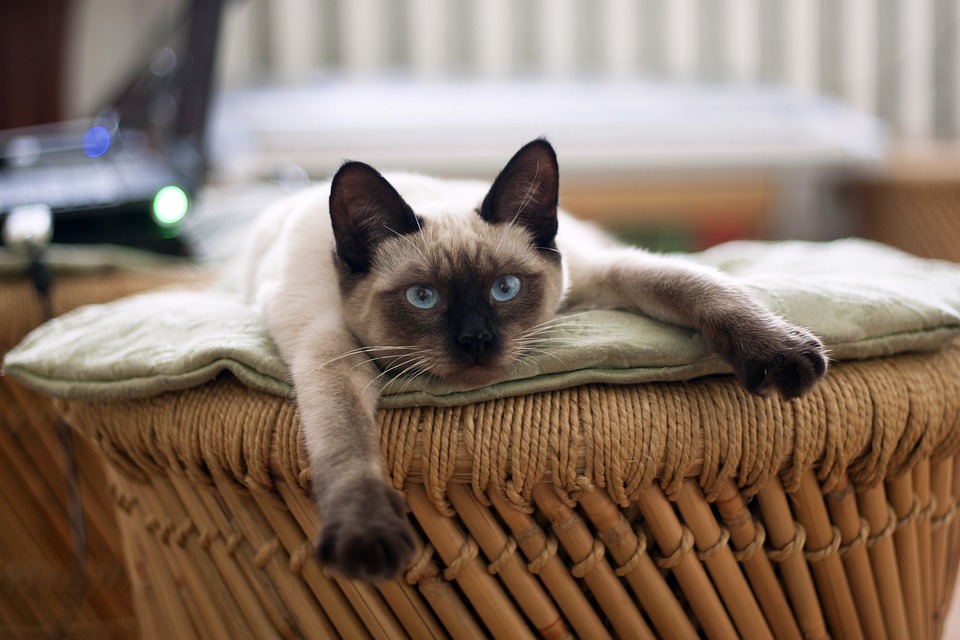Cats have a unique way of expressing their affection towards humans, and one such behavior is tail wrapping. When a cat wraps its tail around you, it signifies a special bond and trust. In this article, we will delve into the reasons behind this behavior and explore how to respond to it appropriately. Additionally, we will address some commonly asked questions related to tail wrapping in cats.
Understanding Tail Wrapping: A Sign of Feline Affection
1.1 The Language of Tails: Decoding Feline Communication
Cats communicate through various body language signals, and their tails play a significant role in expressing their emotions. Understanding the different tail positions and movements can help in interpreting their messages.
1.2 Tail Wrapping: An Affectionate Gesture
When a cat wraps its tail around you, it is a clear indication of trust and affection. It is their way of showing that they feel safe and comfortable in your presence.
1.3 The Bonding Effect: Significance of Tail Wrapping Behavior
Tail wrapping helps strengthen the bond between cats and their human companions. It creates a sense of closeness and intimacy, indicating that the cat considers you a part of their social circle.
Unraveling the Reasons Behind Tail Wrapping
2.1 Scent Marking: Claiming You as Their Own
Cats have scent glands on their tails, and when they wrap their tails around you, they are marking you with their scent. It is their way of claiming you as their own and marking their territory.
2.2 Seeking Security and Comfort: A Safe Haven
Tail wrapping can also be a sign that the cat seeks security and comfort. By wrapping their tail around you, they are seeking reassurance and finding solace in your presence.
2.3 Positive Associations: Reinforcing Pleasant Experiences
If your cat associates tail wrapping with positive experiences such as receiving attention, treats, or playtime, they are more likely to engage in this behavior as a way of reinforcing those pleasant experiences.
2.4 Social Connection: Strengthening the Human-Feline Relationship
Tail wrapping is a social behavior that helps strengthen the bond between cats and humans. It is a form of non-verbal communication that signifies a deep connection and mutual trust.
Responding to Tail Wrapping: Encouraging and Acknowledging Affection
3.1 Respect Boundaries: Giving Cats Their Space
While tail wrapping is a sign of affection, it is essential to respect the cat’s boundaries. Allow them to initiate and control the level of physical contact they are comfortable with.
3.2 Gentle Petting: Reinforcing Trust
Gently petting your cat while they are tail wrapping can reinforce the trust and affection they are expressing. Pay attention to their body language and adjust the intensity and duration of the petting accordingly.
3.3 Verbal Affirmations: Communicating through Words
Cats respond to verbal cues, so using soft and soothing words while they are tail wrapping can further strengthen the bond. Speak to them in a calm and reassuring tone to acknowledge their affection.
3.4 Playtime and Quality Time: Strengthening the Bond
Engaging in interactive play sessions and spending quality time with your cat can deepen the bond between you. Playtime provides an opportunity for physical activity and mental stimulation, enhancing the overall well-being of your feline companion.
Frequently Asked Questions (FAQs)
4.1 Is tail wrapping behavior limited to domesticated cats?
Tail wrapping behavior is observed in both domesticated cats and some wild feline species. It is a natural instinct for cats to seek comfort and security through body contact.
4.2 Why do some cats not engage in tail wrapping behavior?
Not all cats exhibit tail wrapping behavior. Some cats may have different ways of expressing their affection, while others may simply be less inclined to engage in this specific behavior.
4.3 Can tail wrapping be a sign of discomfort or fear?
Tail wrapping is typically a positive behavior indicating affection and trust. However, in rare cases, it can be a sign of discomfort or fear. It is crucial to observe other body language cues to determine the cat’s emotional state accurately.
4.4 How can I differentiate between tail wrapping and aggression?
Tail wrapping is a gentle and affectionate gesture, while aggression is typically accompanied by other aggressive body language signals such as hissing, growling, or a puffed-up tail. It is essential to consider the overall context and the cat’s body language to differentiate between the two.
4.5 What should I do if my cat’s tail wrapping becomes excessive or bothersome?
If your cat’s tail wrapping becomes excessive or bothersome, it is essential to evaluate the underlying cause. Excessive tail wrapping can sometimes indicate anxiety or a medical issue. Consulting a veterinarian or a feline behaviorist can help identify and address the problem.
4.6 Is it advisable to initiate tail wrapping with my cat?
While it is important to respond appropriately to your cat’s tail wrapping, it is generally advisable to let the cat initiate the behavior. Cats have their preferences and boundaries, and forcing physical contact may lead to discomfort or stress.
Conclusion
Understanding the behavior of our feline companions is crucial for building a strong bond with them. Tail wrapping is just one aspect of their complex communication system, and by recognizing its significance, we can respond appropriately to our cats’ affectionate gestures. Remember, each cat is unique, so observe and respect their boundaries while nurturing the special connection you share.








